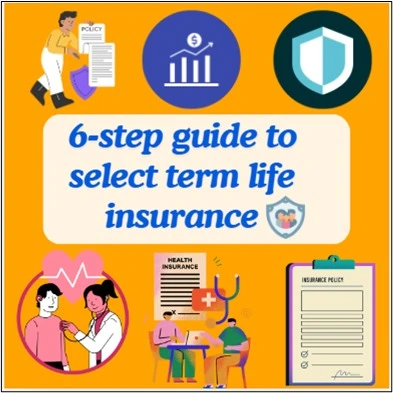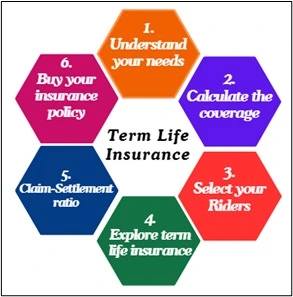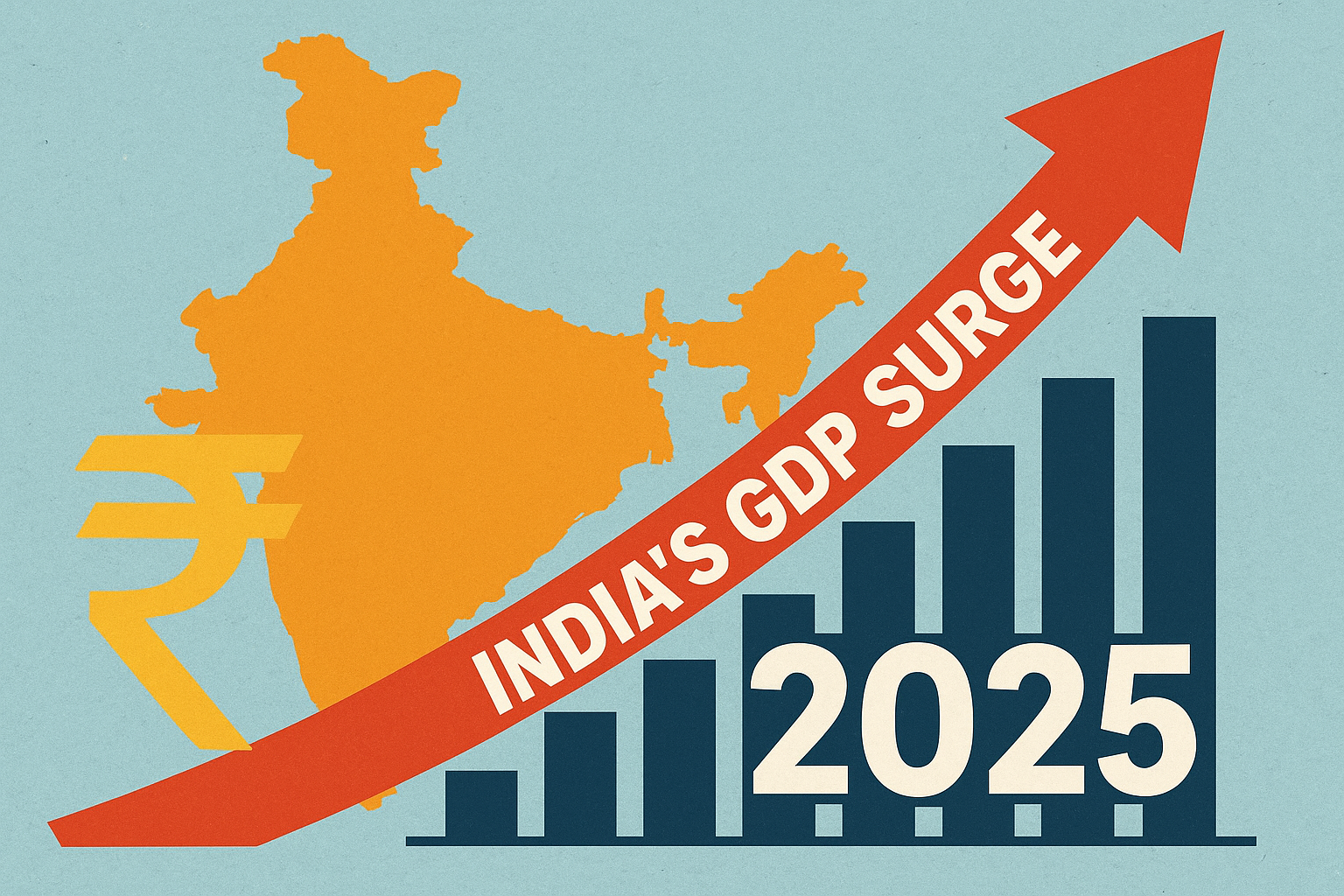Table of Contents
Insurance is a crucial investment. Plan and select your term life insurance with these 6 easy steps.
The exposure to various diseases, climate change, junk food, etc, is growing in the world. Moreover, medical technology is developing to match the pace of this exposure, but in this process, its cost is reaching new heights every day. Medical expenses are usually uncertain and tough to manage. All these are fueled by inflation.
Planning for future uncertain expenses is the need of the hour. Increasingly, people are buying life insurance to cover their medical expenses and families in case of death. However, whole life insurance could be costlier. That’s the reason people sometimes look for term life insurance.
Term life insurance plan provides coverage for a temporary term. If the insurance holder dies in this term, his/her family or mentioned nominees are given the insurance coverage. The insurance is feasible for people willing to pay lower premiums, to obtain coverage similar to whole life insurance.
However, investors usually ask – How to select term life insurance? Because agents and companies would sell them their products, and there are chances that investors miss the plans suitable for them.
Here is your 6-step easy guide to selecting the most suitable term life insurance!

Step 1. Understand your need
Before looking for any insurance, one should assess the main objective of this insurance. Investors should be clear with personal needs from the insurance rather than being driven by which insurance other people are buying.
In case of the death of an insurance holder, the term life insurance pays the coverage amount to the beneficiary. Accordingly, two prime objectives for people buying term life insurance are:
- If you aim to secure your spouse/family/nominee with a certain retirement sum.
- If you have some important expense planned in the upcoming 10/15/20/30 years in life
Various factors are to be considered while selecting term life insurance, such as current age, future expenses, inflation, tenure for the policy, current medical condition, number and nature of dependents/beneficiaries after your death, etc.
Step 2. Calculate the coverage required
Investors decide for coverage needed after buying insurance or as per the policy suggestion – this can create two situations:
- If the coverage decided is lower than the actual need, after the insurance holder’s death, it would fall short of supporting the beneficiaries.
- If the coverage decided is more than the real need, the high premiums would be paid by the insurance holder.
To these, the required coverage should be planned. Let’s understand the calculation with this example:
(Note : all the numbers in this illustration are hypothetical)
Sanjana (age = 40) is planning to secure her family with term life insurance for the next 20 years in case of her death. She has a daughter aged 18 and husband aged 43.
| Current monthly expenses of beneficiaries | ₹45000/- |
| Let’s assume inflation be at 5% for the next 20 years | 5% |
| Monthly expense after 20 years | ₹1,19,400/- (approx) |
Moreover, her liabilities, such as any loan instalments and bills, can be considered. Let it be ₹20,000/-, it should be added.
Further, her liquid assets, such as stocks, mutual funds, etc, should be deducted. Let it be ₹50,000/-.
Any future expenses, such as the daughter’s higher education, emergency expenses, retirement fund for the family, etc, should be accounted for. Let here it be ₹500,000/- it will be added. Considering all these factors, her coverage needs would be as follows:
| Particulars | Amount in ₹ |
| Monthly expense | 1,19,400/- |
| Liabilities (add) | 20,000/- |
| Liquid assets (less) | (50,000/-) |
| Extra sum (add) | 500,000/- |
| Total coverage | 5,89,400/- |
The above given example explains how crucial it is to account for liabilities and liquidity. The liabilities of ₹20,000/- increases the need for coverage. While the extra sum of ₹500,000/- accounts for any uncertain expenses that emerges after the policyholder’s death. Thus, the total coverage can be calculated with considering the extreme situation, to avoid under-calculation of the future need.
These amounts and expenses would change for every individual. It is also a reason to calculate the required coverage.
Step 3. Select your riders wisely
Riders are the add-on benefits provided by the insurance policies. It increases the coverage provided and also the premium amount. As per the insurance holder’s need, there are different riders, such as:
- Critical illness cover
They provide extra coverage if the insurance holder is diagnosed with a critical disease.
- Cover for death due to accident
In a major accident, the insurance holder’s family suffers badly from his/her death. For such uncertain situations, additional cover is provided.
- Premium waiver – on disability
During the policy tenure, if the insurance holder is diagnosed with any disability, this rider eliminates premium payment liability for the remaining tenure.
- Premium waiver – on critical illness
Various critical illnesses can restrict the ability of insurance holders to pay the premium. In such times, this rider eliminates that liability.
Step 4. Explore term life insurance plans
Before purchasing the term insurance policy, one should have all the information regarding its functioning. Moreover, its features should align with investor’s objectives.
Following this, investors should assess the term life insurance policy by various companies in the market. Features such as coverage, premium, riders, tenure, etc, would differ.
Premium payment is one of the most important factors to decide the best policy. Term life insurance has comparatively lower premiums, so affordable premiums with desired coverage should be the target.
Step 5. Claim-settlement ratio
It is a crucial factor when looking at different term life insurance policies. The claim-settlement ratio indicates the number of claims settled against the number of claims raised by the insurance holders.
For example, if this ratio is 92%, then 92 claims are settled out of 100 claims made. If this company had a total of 500 claims raised in this policy, then out of it, 460 (500*92%) claims were settled. The higher the claim-settlement ratio, the more efficient the company.
Step 6. Buy your term life insurance
The terms and conditions of a term life insurance policy should be clear to the investor. Moreover, the company, its efficiency, and client reviews should be properly checked. This is a long-term policy mostly spanning 15, 20, 25, 30, etc, years. So, the credibility of the insurance policy is crucial. If an insurance company defaults during your tenure, the premium paid for previous years would be wasted, and there would be no cover. After ascertaining all the parameters mentioned above, if an investor is unsure, he/she can consult any agent.

Conclusion
These steps provide an easy process for deciding on certain aspects before buying any insurance policy. Moreover, the best term life insurance policy would be the one which matches all the needs of an investor.
DISCLAIMER: This article is not meant to be giving financial advice. Please seek a registered financial advisor for any investments.
- Make in India 2.0: How Manufacturing Is Reshaping Market Sentiment - December 13, 2025
- Real Estate Boom : Why Tier-2 Cities Are Attracting Big Investors - December 12, 2025
- India’s GDP Surge 2025: What the New Growth Numbers Mean for Markets - December 9, 2025





